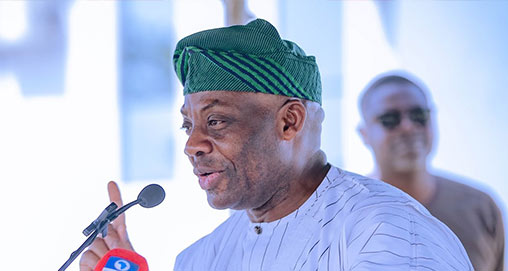In a significant show of commitment to educational development, the Federal Government has approved a ₦158 billion fund allocation to strengthen Nigeria’s education sector. The announcement came from the Honourable Minister of Education, who described the initiative as part of a broader strategy to raise standards, expand access, and improve learning outcomes nationwide.
This investment is intended to address a number of pressing challenges in the country’s schools, ranging from infrastructure deficits to teacher capacity-building, digital learning expansion, and curriculum modernisation. The government hopes that this infusion will bridge critical gaps and accelerate progress toward Nigeria’s educational goals.
Table of Contents

Key Focus Areas of the Funding
According to the Minister, the ₦158 billion will be channelled into key strategic programmes and projects, including:
- Infrastructure Renewal and Expansion
A significant portion of the funds will be dedicated to upgrading classroom facilities, renovating dilapidated buildings, expanding school blocks, and providing essential amenities such as water, electricity, and sanitation. The aim is to create safe, conducive, and well-equipped learning environments to foster better student engagement and outcomes. - Teacher Training and Professional Development
Recognising that the quality of education hinges on the skills of its instructors, the government has earmarked funds for continuous teacher training programmes. These will include workshops, refresher courses, and new pedagogical strategies — especially around digital-enhanced learning and modern curriculum delivery. - Digital Learning Infrastructure
Part of the investment will go into ICT equipment, internet connectivity, and digital content development. By equipping schools with modern tools and making learning resources accessible online, the government seeks to promote blended and e-learning, especially in underserved regions. - Curriculum Review and Innovation
Another priority is to support ongoing efforts to modernise the national curriculum, ensuring it aligns with global best practices and evolving skill demands. Funds will also support the development of new teaching materials, assessments, and teacher guides to reflect updated curricular standards.

Implications for Students, Teachers, and Schools
The approved funds have the potential to bring transformative change across the educational ecosystem:
- Students stand to benefit from improved facilities, better-equipped classrooms, and access to digital learning tools that can enhance their experience and performance. The improved learning environment may reduce dropouts and improve overall retention and attainment.
- Teachers are expected to enjoy more robust professional support, with opportunities for up-skilling and exposure to modern teaching methods. This should boost morale, enhance instructional effectiveness, and contribute to better student outcomes.
- Schools (especially public ones) could see reductions in overcrowding, better maintenance standards, and improved infrastructure. Access to ICT resources and reliable connectivity will enable them to deliver more engaging and up-to-date educational experiences.
In particular, underserved and rural schools are likely to gain the most, as the funding aims to level the playing field by reducing infrastructure and resource gaps between school communities.
Challenges and Critical Considerations
While the ₦158 billion boost is welcome, several factors will determine how much of the intended impact is realised:
- Effective Fund Disbursement and Monitoring
Ensuring transparency and accountability in how the funds are allocated and used will be vital. Without strong monitoring mechanisms, there is a risk of delays, misappropriation, or under-utilisation of resources. - Timely Execution
The success of this initiative hinges on prompt procurement, contracting, and implementation of projects. Any bureaucratic bottlenecks or procurement delays could slow down progress. - Sustainability and Maintenance
Once projects are completed — especially new infrastructure and ICT installations — there is a need for ongoing maintenance and upgrades. Without proper upkeep, facilities may deteriorate quickly, reducing long-term impact. - Capacity at State and Local Levels
Since education delivery is shared between federal, state, and local governments, collaboration will be essential. The federal boost must be complemented by state and local efforts to align execution, staffing, and sustainability support. - Complementary Policies
To maximise impact, the funding must be paired with supportive policies — such as teacher incentives, improved welfare, curriculum reforms, and stakeholder engagement (parents, communities, educators).

Conclusion
The Federal Government’s decision to inject ₦158 billion into Nigeria’s education sector marks a promising step toward addressing longstanding infrastructural and pedagogical gaps. If executed with rigour, transparency, and coordination across levels of government, this investment could yield meaningful improvements in learning outcomes, equity, and the overall quality of education in the country.
Join Our Social Media Channels:
WhatsApp: NaijaEyes
Facebook: NaijaEyes
Twitter: NaijaEyes
Instagram: NaijaEyes
TikTok: NaijaEyes
READ THE LATEST EDUCATION NEWS













![Heartwarming Moment: Priscilla Ojo and Son Rakeem Reunite with Juma Jux in Tanzania [VIDEO] Priscilla Ojo](https://naijaeyesblog.com/wp-content/uploads/2025/09/Reunited-Priscilla-Ojo-says-as-she-celebrates-son-Rakeem-one-month-Kemi-Filani-blog-min-768x512-1-1-180x135.avif)

























